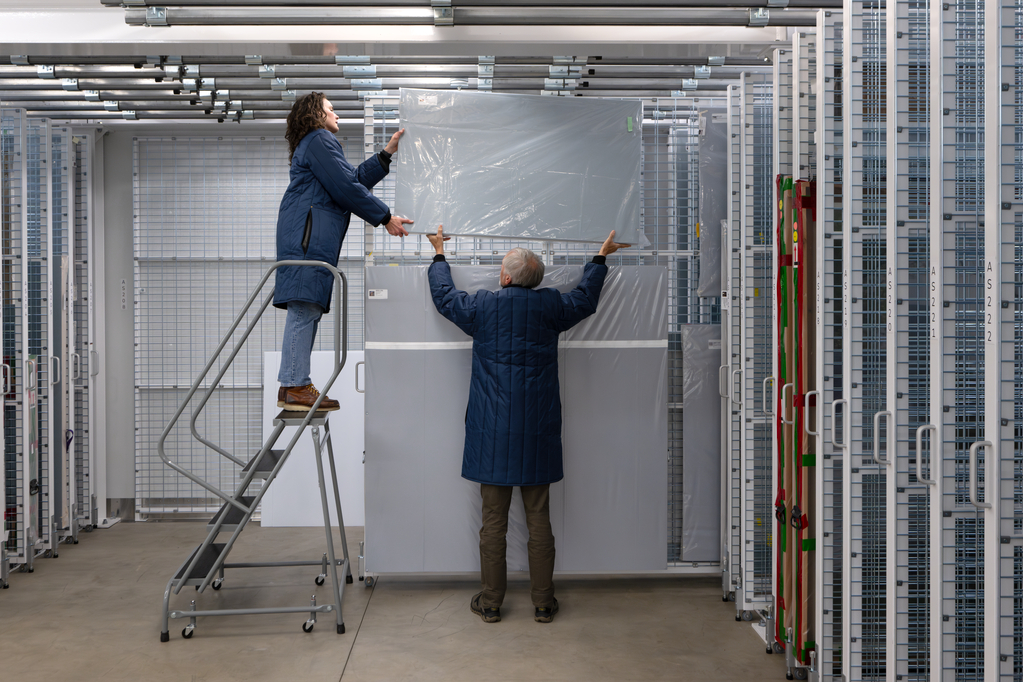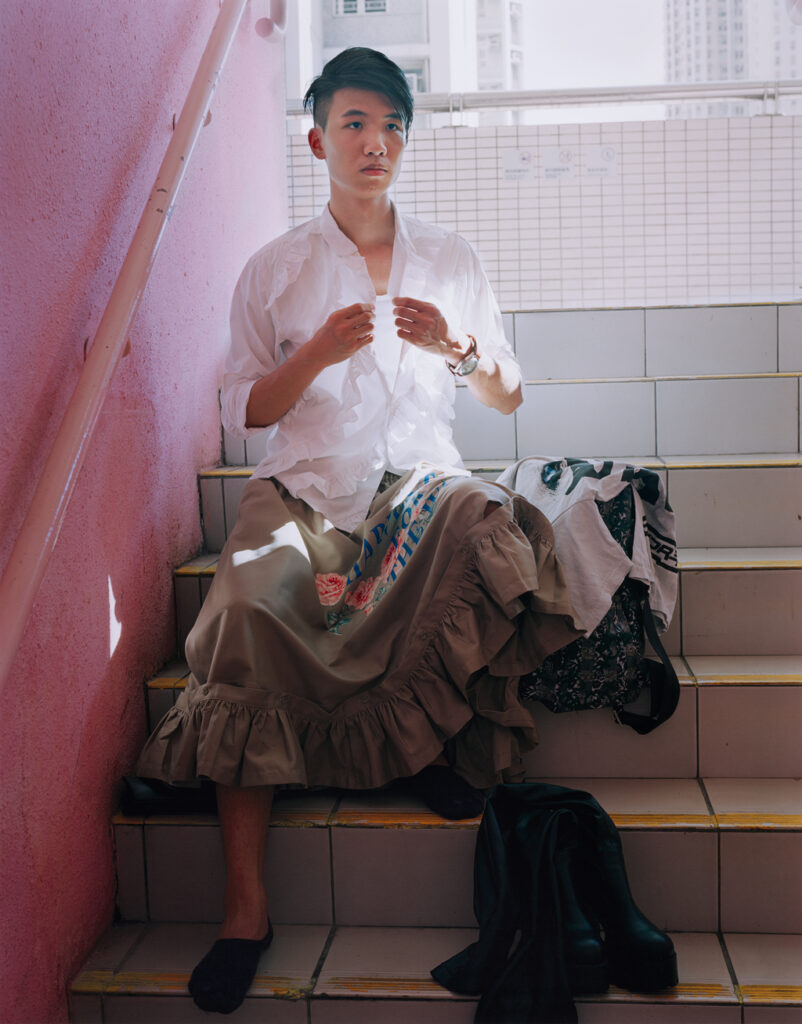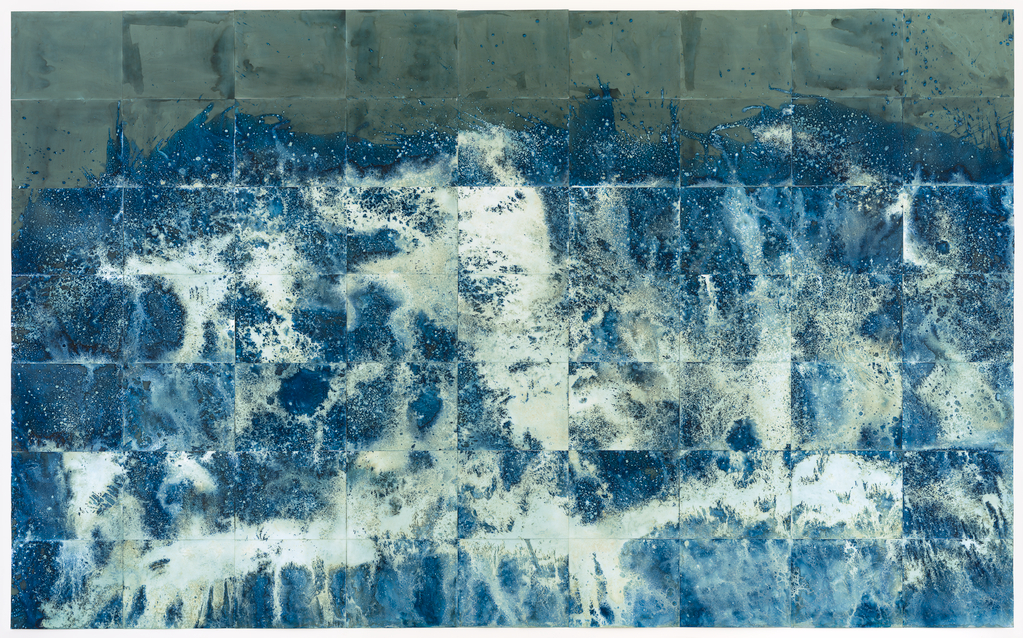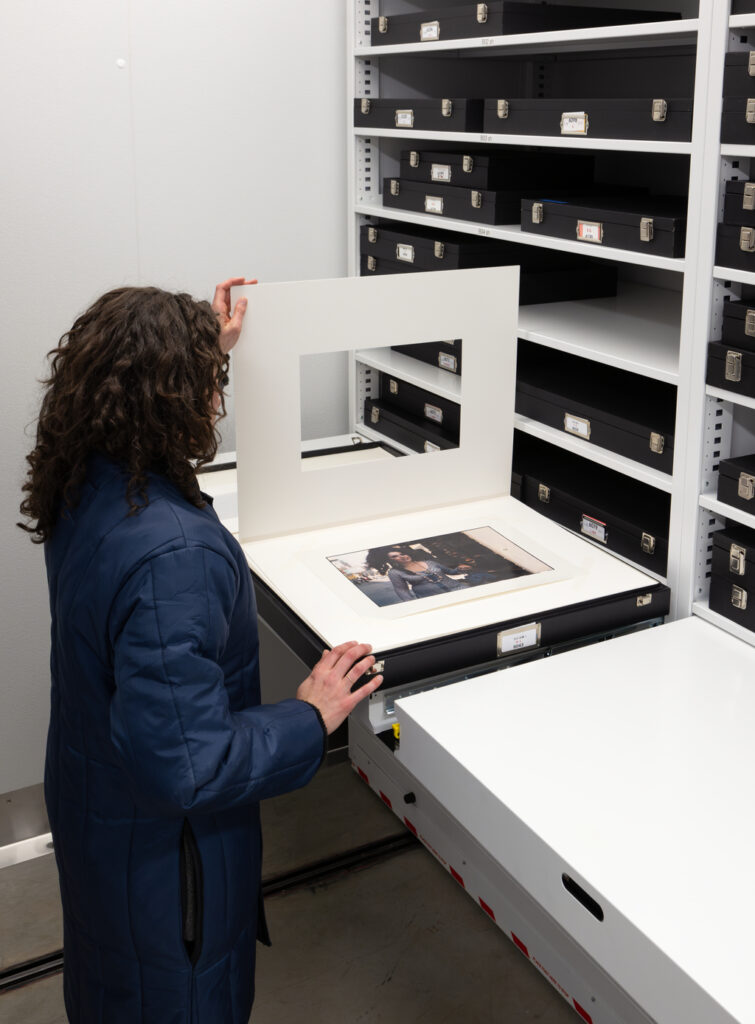
Situated in SFMOMA’s basement is a cold storage unit housing over 11,000 photographs at 40 degrees Fahrenheit, many of modest dimensions stacked in drawers and others well over life-sized hanging on retractable screens.
One example is Ka-Man Tse’s Untitled, from the series Narrow Distances (2017), a color inkjet print. Another example, Meghann Riepenhoff’s cyanotype Littoral Drift Near Shore #209, consists of 63 sheets of paper blasted by ocean waves and touched by sand and sunlight.
Why the chilly environment? Placing photographs in cold storage preserves them at their best possible condition by controlling or slowing down deterioration, especially for color photographs, chromogenic prints, early inkjet prints, and prints made with light-sensitive materials and substances. Various factors determine whether to send a photograph to cold storage, including medium, year, chemistry, process, and length of time it will be stored.

“It is an opportunity to care for the photographs when they first enter the museum’s collection in pristine condition, something we were unable to do before the cold vault.”

The Tse and Riepenhoff photographs certainly merit this anti-aging treatment. With her unconventional method, Riepenhoff’s work presents a unique challenge for conservation. In the case of Tse’s work, “the new inkjet prints made with pigments are quite stable compared to chromogenic prints from the 1970s made with dyes,” says Associate Photography Conservator Michelle Kloehn. “We prioritize them for cold storage because they are new acquisitions and fall into the museum’s DEI policy of diversifying the collection. It is an opportunity to care for the photographs when they first enter the museum’s collection in pristine condition, something we were unable to do before the cold vault.”
The storage unit features two rooms with controlled temperature and relative humidity levels. Sensors carefully monitor each parameter, and door openings are minimized to prevent temperature fluctuations, conserve energy, and preserve the art. Photographs first acclimate in the “cool” room for 24 hours at 55 degrees Fahrenheit. The second, “cold” room is set at 40 degrees Fahrenheit and houses photographs permanently. To ease the transition between the museum environment, the cool room, and the cold vault, the Collections Management team wraps the photographs in “coats” (protective films and barriers) that are reused when the works return to storage.
In operation since SFMOMA’s 2016 expansion, the cold storage unit adheres to rigorous sustainability standards. Conservators, curators, engineers, architects, and sustainability consultants collaborated on a design that would maximize the unit’s energy efficiency. Strategies such as setting consistent values for the building’s relative humidity and temperature enables the museum to achieve its dual objectives of preserving photography and complying with San Francisco’s rigorous Green Building Code to become LEED Gold-Certified.

“Of course, we want to preserve these objects for future generations, but what about present generations? Something that guides my practice is finding ways to safely display photographs for the enjoyment of people today.”
Does this mean you should keep your photos in the refrigerator? No. It’s important to note that although household fridges maintain a similar temperature as the cold storage unit, they lack the humidity control crucial for preservation. Putting a treasured family photograph or fragile print in a home refrigerator would just give you a cold, damp photo.
A more practical at-home conservation strategy is to minimize light exposure because “photographs are made with light, and of light, and they are light-sensitive,” explains photography conservator Roberta Piantavigna. “Of course, we want to preserve these objects for future generations, but what about present generations? Something that guides my practice is finding ways to safely display photographs for the enjoyment of people today.”